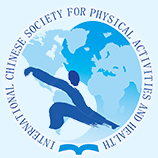Document Type
Abstract
Keywords
primary school students, KDL, physical fitness
Publication Date
8-1-2022
Abstract
Physical and Health Education Curriculum (KDL) is a curriculum based on China's Sports and Health Curriculum Standards and China's Health Sports Curriculum Model. This study aims to explore the influence of KDL on primary school students' physical fitness. A total of 91 primary school students participated in this study, including 47 in the experimental group and 44 in the control group. The experiment lasted for 18 weeks. During the experiment, the PE teacher of experimental group used KDL to teach, with specific requirements: (1) The activity time of each class was more than 75%, and the intensity, measured with average heart rates, was above 140-160 beats/min; (2) Each class had about 10 minutes of physical exercise; and (3) each class focused on activities and competitions. The control group was given routine physical education lessons without intervention. Before and after the experiment, both groups participated in physical fitness tests, including 50-meter running, vital capacity, seat forward flexion, and 1-minute rope jumping. SPSS was used to analyze the physical fitness of both groups. Before the experiment, there was no significant difference in physical fitness between the two groups. After the experiment, the experiment group outperformed the control group in the 1-minute rope skipping (t = 10.77, p < 0.05) and exceled in the vital capacity (t = 0.04, p < 0.05). There was no significant difference in other physical fitness tests between the two groups. This study shows that KDL curriculum has a significant positive impact on physical fitness of primary school students, mainly reflected in vital capacity and 1-minute rope skipping. The effect may be related to the high time on task and appropriate intensity advocated by KDL curriculum. We recommend KDL physical curriculum to be promoted in primary and secondary schools.
DOI
https://doi.org/10.18122/ijpah.1.2.28.boisestate
Recommended Citation
Wenrui, Fan; Xiaozan, Wang; and Mingming, Guo
(2022)
"Experimental Study on the Influence of KDL Physical and Health Education Curriculum on Primary School Students' Physical Fitness,"
International Journal of Physical Activity and Health: Vol. 1:
Iss.
2, Article 28.
DOI: https://doi.org/10.18122/ijpah.1.2.28.boisestate
Available at:
https://scholarworks.boisestate.edu/ijpah/vol1/iss2/28
Included in
Exercise Science Commons, Health and Physical Education Commons, Public Health Commons, Sports Studies Commons


